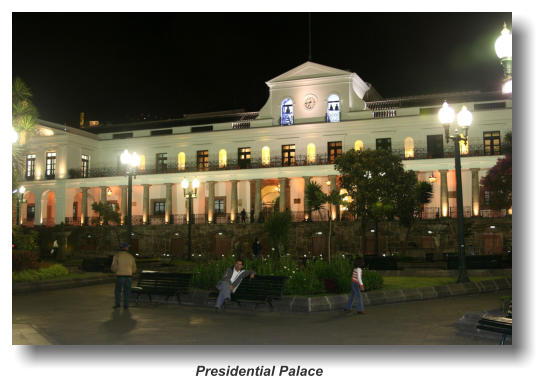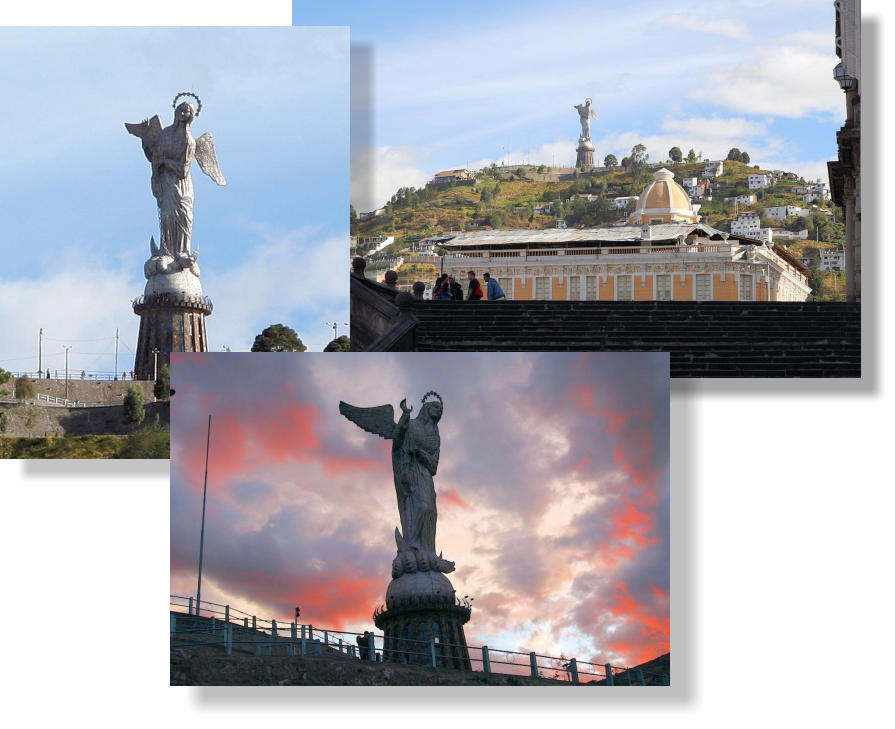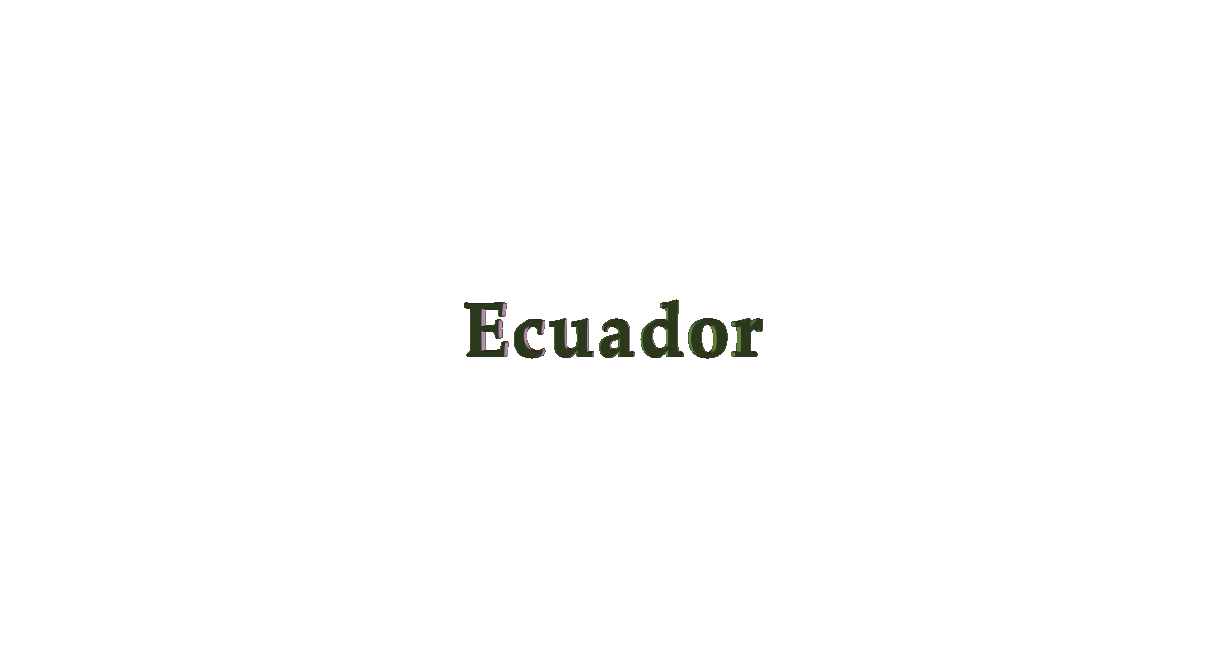


Amazonian Country Located at he heart of the Equatorial Line
Pichincha

©1996 el-ecuador.com - All rights reserved. - This Web site was created and maintained by: Fernando Silva
This site was last updated on: August, 2, 2022


Quito
Founded in 1534, Quito lies at an altitude of 2,850 m (9,350 feet) above sea level. The city is located between two mountain
ranges and is divided into three sections: The Old City, the Modern City and the southern side of the city. Quito was the first
city named as “UNESCO World Heritage Site” in 1978.
As the largest city in the Americas, Quito’s Old City holds around 40 churches and convents, and over 30 combined
Squares, convents and monasteries. Because of the richness of its architecture, history and heritage, this city has been
called the “reliquary of the Americas”. Tourists are delighted to visit excellent museums, walk the colonial side of the Historic
Center, admire the statue of the Virgin sitting atop of the hill “El Panecillo” and admire colonial churches like:
•
La Basílica, built in 1873 and blessed by the Pope
Juan Pablo II on January 18, 1985
•
La Compañía, the construction of this church began
in 1605, and it took 160 years to be completed.
•
San Francisco, one the greatest architectural jewel
in Latin America, construction began in 1536 and was
finished in 1580.
•
La Catedral, construction started in 1562 and it was
finished in 1806. Here are buried the mortal remains
of Mariscal Sucre and of several presidents of the
Republic of Ecuador, as well as some bishops and
priests.
Independence Square or Plaza de la Independencia, located at the heart of the Old City, the main square holds the
Monument to the Independence in honor to the Heroes of August 10, 1809. On this date the city had the “First Cry of
Independence” of the Royal Audience of Quito
from the Spanish monarchy.
Around this Plaza you find the Presidential
Palace or Carondelet Palace, the Metropolitan
Cathedral, the Archbishop’s Palace and the
Municipal Palace. Carondelet Palace is the seat
of the government of the Republic of Ecuador,
and official residence of the president.
This emblematic building’s history dates back to
colonial times around 1575. During the
Republican era, almost all the presidents have
governed from this building.
The president lives with his family in the palace,
in a luxurious colonial-style apartment. Current
sitting president, considering that the palace and most state agencies are Ecuadorian heritages, converted the presidential
palace into a museum accessible to anyone who wishes to visit.


El Panecillo is a 656 foot hill located to the south of the Old City, at the top of this hill we can see an impressive 148 foot tall
aluminum monument of the “Virgin of Quito”. This virgin also known as the Quito’s Madona monument has a bronze placard
affixed in which the statue represents the Woman of the Apocalypse, as described in the Book of Revelations.
This hill was known in Inca times as Shungoloma or “Hill of the Hearth”. It was used as a place of worship of the sun, after
the Spanish arrival from 1812 to 1815 they used the hill to construct a fortress to control what was going on down in the city.
Today when you travel to the top you can have a 360° view of the city, on clear days you can see the white crested
volcanoes of Cotopaxi and Cayambe.

Mitad del Mundo, this national landmark is located 20 km or 12.4 miles to the north of Quito, here you find the square
that contains the pyramid “Equator Monument” located at latitude 0-0’-0”.
The Equatorial Line is that mathematical and imaginary line that divides the earth in two halfs called North and South
Hemispheres. Local ancestors, Los Quitus, before the discovery of America called this site Inty-Ñan or the Sun’s Path.
The monuments stand 30m or 98.5 feet tall, and is topped with a golden globe. The Museo Etnográfico Mitad del Mundo,
was finished in 1982 and it was supposed to mark the point where the equator passes through Ecuador. However,
according to recent GPS calculations, the equator actually lies about 240 meters north of the marked line. The
government is proposing a new structure to mark the actual equator. The "Tower of the Sun" proposed by noted Uruguay-
born architect Rafael Vinoly would be a mile-tall tower, roughly twice as tall as Dubai's Burj Khalifa, currently the tallest
building in the world.
The tower will include a handful of levels that
will be essentially platforms for museums,
concessions and observation along the lower
half of the massive spire. A pressurized
elevator will take visitors to nearly three miles
above sea level. The Tower of the Sun project
is estimated to cost $200 million, and local
officials say they've had discussions with
potential investors from the United States,
Qatar and elsewhere. If all goes as the tower's
promoters hope, construction could begin in
2014.
So, visiting the Half the world is a unique and
fascinating experience, tourists visiting this
square can’t resist the opportunity of having their
picture taken while standing on both hemispheres at the same time with the Pyramid on the background.
Other attractions to visit when you are here:
•
The Ethnographic Museum
•
The Planetarium
•
The Art Pavilions
•
Colonial Quito
•
Colonial Churches
•
Insectaries
•
Cathedral
•
The Cable Car to Pichincha
•
Pululahua Geobotanical Reserve


Pichincha Province is located in the north center of the country, in the geographical area known as the inter-Andean region
or sierra, founded on July 25, 1824, holds a population of about 3, 230,000 people as of the 2020 census, this province its
one of richest in the country with a full display of the Spanish architecture, history, mesmerizing landscapes and much
more.
Because of its strategic location, Pichincha province
is the point of departure to other places in Ecuador,
The climate is variable due to the height, from the
tropical to the glacial, due to the presence of the
Andes mountain range. A wide variety of attractions
such as the Half City of the World, (Mitad del
Mundo), Papallacta thermal waters, Teleferico to the
volcano Pichincha and hike to the Guagua
Pichincha, Las Tolas de Cochasquí and the Caldera
del Pululahua, are located in places close to the
Ecuadorian capital. While in the snow and
volcanoes that surround Quito, montañist can
experience the trill of high climbing.






















